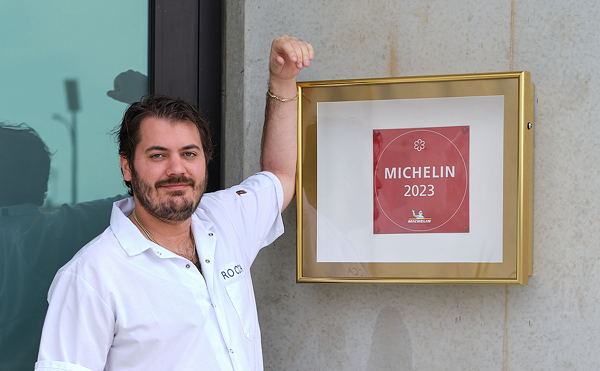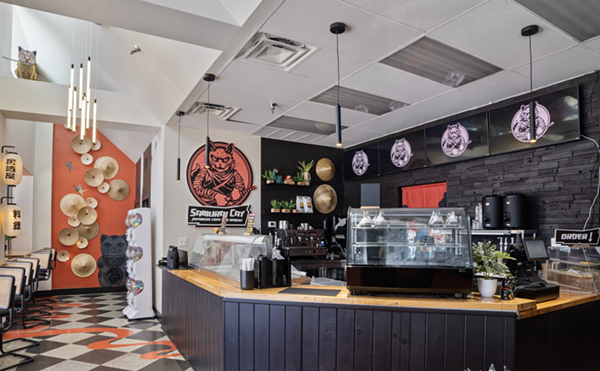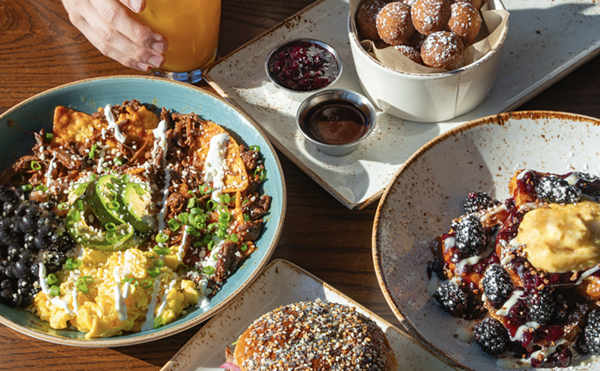The Swami of Umami sat across from me at Starbucks, describing how the wine industry is trying to squeeze square pegs into giant round holes. He eyed my no-sugar soy latte, furtively analyzing my selection. After I squirmed a bit, he finally explained why: Apparently, my coffee choice and my tongue divulge which wines I prefer.
Wine guru Tim Hanni first taught me the concept of "umami" (oo MAH mee) eight years ago, and ever since, I've spread his teachings to anyone interested (or not). Umami, a word meaning "savory" in Japanese, is the flavor compound that makes tomatoes taste riper, grilled meat melt on your tongue, and soy sauce a go-to condiment. It's also why the much-maligned monosodium glutamate (MSG) makes food smack better. The savory sensation derives directly from your tongue's reception of glutamic acid in meat, cheese or vegetables like mushrooms. Hanni theorizes that the bitterness in wine becomes more palatable when softened with the umami found in food, explaining why a young, tannic cabernet sauvignon becomes more pliable when paired with a deliciously marbled rib eye.
On top of that steak, Hanni also sprinkles acidity and salt — additional bitterness tamers — using a spice blend he invented called Vignon. A couple years back, he and a partner threw some cash together and developed an all-natural, umami-rich salt substitute with 29 astringency-suppressing ingredients, including dehydrated lemon juice, parmesan cheese, salt and dried mushrooms. The result is a food-and-wine-pairing makeover, no matter what the wine or how dry/sweet it is. When a grinning Hanni offered up a Vignon-tossed asparagus salad — a stereotypically wine-hating vegetable — with a swig of tannic cabernet-merlot, I was skeptical. But after one bite, I now use the stuff all the time.
Armed with umami knowledge and a map of the tongue, Hanni's taking on the wine industry. Citing our coffee-drinking habits as an example, Hanni remarked that sugar, often crammed into Starbucks' bitter offerings, is shunned in the wine industry. Even though humans naturally prefer sweet flavors, wineries continue to pimp dry red wines. But our sugar love is mapped on our tongues, buried in the recesses of our taste buds, those tiny red bumps covering the tongue's surface. More bumps indicates higher sensitivity to bitterness. Hanni theorizes that we evolved this way because, during our hunter-gatherer days, sweet meant sustenance and bitter meant death, explaining why women — historically the family feeders — prefer fruitier wines.
The Swami of Umami tells everyone, "Don't believe what you think." And don't let the establishment lay guilt or shame on you; sweet is cool, and apparently, quite native.
To put people at ease with their primal urges, Hanni developed an online taster test called the "Budometer" to categorize wine drinkers into four different segments: 1. Sweet, 2. Hyper Sensitive, 3. Sensitive and 4. Tolerant, with Sweet being the most sensitive to bitterness and Tolerant the least. I asked a crew of 20 to take the test, and they showed remarkable consistency in their wine proclivity. The Sweets leaned toward sweet wines, while the Tolerants desired more tannins and flavor. According to Hanni, more than 50 percent of people fall in the Sensitive category, with the rest spread out over remaining three segments. Women dominate the Sweet and Hyper Sensitive categories, while Men, the Tolerant. As expected, some Sweets vehemently resisted the moniker, but blind tastes proved the test correct. For the record, I'm a Hyper Sensitive, proudly sharing the segment with wine critic Jancis Robinson.
I'm sold on the concept, and thus starting a new feature for "Corkscrew": Instead of a sweetness rating, each wine I review will carry one of the four Budometer segments. Take the three-minute online test at budometer.com, and learn where you fall. It will probably make you feel better about the riesling you guzzle on the sly.
Recommended Wine
Bonterra 2007 Rosé Mendocino (California) Dripping with strawberry, tart cherry, raspberry with a fantastic citrus finish. Organic. SW, HS, S. $14. 4 stars
Sweet (SW), Hypersensitive (HS), Sensitive (S), and Tolerant (T). Find out your tasting profile at budometer.com.
















